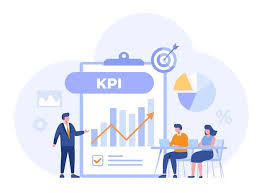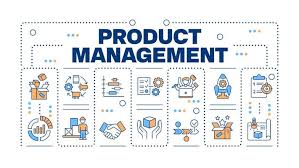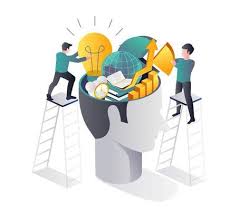What organizational risks (team structure, governance, skills) need evaluation?
Mergers, acquisitions, and strategic investments - especially within the technology sector - are often driven by the promise of exponential growth and increased value. However, the true strength of any enterprise lies not just in its tangible assets or market position, but deeply embedded within its organizational fabric: its team structure, governance mechanisms, and collective skills. Neglecting these critical "soft" elements can lead to costly surprises post-transaction and jeopardize long-term success. A thorough evaluation of these organizational aspects is as vital as scrutinizing financial records or technical infrastructure, forming the bedrock of successful technology and product due diligence.
The Interplay of People, Processes, and Performance in Due Diligence
Effective due diligence extends far beyond merely auditing numbers and systems. It encompasses a holistic view that includes the People, Processes, and Performance within an organization. Understanding the quality of management, the prevailing corporate culture, and the intricate employee relationships is crucial because these often dictate the success or failure of deals. For instance, a misalignment in company cultures is frequently cited as a major reason for M&A deal failures, leading to friction and lower employee engagement. It's about evaluating not just what a company does, but how it does it, and who is doing it.
Assessing Team Structure and Capabilities
A granular examination of an organization's human capital and how it's structured is paramount.
Product Team Structure and Technical Talent
The way a product team is organized directly impacts its ability to innovate and deliver. Diverse models exist, such as the squad model (autonomous, cross-functional teams focused on specific product areas, ideal for rapid iterations), triad structure (Product Manager, Designer, and Engineering Lead collaborating closely for balanced decision-making), feature-based teams (organized around specific product features), and product line teams (each functioning as a mini-business unit for distinct product lines). Organizations also oscillate between centralized (better alignment, top-down strategy) and decentralized (more autonomy, faster adaptation) product management structures. It’s critical to recognize that no single structure is one-size-fits-all; adaptability is key as the product and company evolve.
Beyond structure, assessing the technical talent and team capabilities is vital. This includes analyzing the organizational chart, succession planning for key roles, and evaluating the cultural fit of the team with the acquiring organization. Metrics like tenure, turnover rates, and development velocity provide invaluable insights into team stability and productivity. A significant risk lies in dependency on key individuals, where critical skills or expertise are not transferable or spread across the team, creating a single point of failure. Furthermore, the lack of experienced developers, particularly in startups on tight budgets, can lead to insufficient code quality and poor development practices, which are major red flags during due diligence. In R&D contexts, optimizing project management requires efficient resource allocation, seamless coordination across cross-functional teams, and continuous monitoring to meet strategic objectives.
Knowledge Transfer and Continuity
A robust organization champions continuous learning and seamless transitions. The ability to effectively transfer knowledge is crucial, especially during leadership changes or when new employees join. A structured knowledge transfer plan, clear timelines, and assigned responsibilities are essential to prevent the loss of critical institutional knowledge and ensure business continuity. Fostering a knowledge-sharing culture among team members, leveraging digital tools and collaboration platforms, and implementing regular training sessions are best practices to achieve this.
Evaluating Governance and Oversight Mechanisms
Governance defines how an organization is directed and controlled, a fundamental aspect of risk management.
Governance Risk Assessment
Governance risk assessment is the systematic process of identifying, analyzing, and evaluating risks related to an organization's governance structure, leadership decisions, and oversight mechanisms. Unlike operational or financial risk, it specifically targets the effectiveness of the leadership team and oversight functions. A robust framework for this assessment typically rests on four essential pillars:
1. Leadership & Culture: This pillar examines how leadership sets the "tone at the top" for ethical behavior, risk culture, and organizational values. Transparency in executive compensation and a culture where employees feel safe raising concerns are key indicators.
2. Structure & Policies: It involves assessing the formal structures, clear reporting lines, documented responsibilities, and policies that guide decision-making.
3. Risk Identification & Analysis: This focuses on systematic ways to uncover potential governance problems before they escalate, using consistent criteria to evaluate risks based on likelihood and impact.
4. Monitoring & Assurance: This pillar emphasizes ongoing attention and verification through key risk indicators (KRIs), independent checks, and regular reporting to the board.
The board of directors holds ultimate responsibility for governance risk oversight, ensuring strategic alignment with organizational goals and risk appetite.
Compliance and Regulatory Adherence
A significant organizational risk stems from non-compliance with legal and regulatory obligations. This includes adherence to tech-related laws, data protection and privacy regulations like GDPR and CCPA, and industry-specific standards such as HIPAA or PCI DSS. Failing to comply can result in severe financial penalties, legal action, and significant reputational damage. Thorough due diligence involves reviewing all relevant policies, contracts, and intellectual property rights, including software licenses and open-source components, to identify any compliance gaps or potential infringement claims. Robust internal controls and an effective incident response plan are also critical to mitigate risks and address security breaches promptly.
The Imperative of Skill Assessment and Development
The human element, particularly the skills and expertise within the team, directly influences an organization's resilience and capacity for growth.
For comprehensive due diligence, assembling a multidisciplinary team with expertise across finance, legal, human resources, IT, and operations is crucial. Beyond functional expertise, specific skill sets must be evaluated:
• Technical Acumen: This involves assessing the team's ability to handle complex technical specifications, ensure code quality, evaluate software architecture for scalability and maintainability, and manage performance.
• Risk Management Skills: Effective risk managers possess a blend of analytical abilities, problem-solving prowess, strong communication, financial and regulatory knowledge, and strategic thinking. They must understand potential costs of failures and stay updated on evolving threats.
• Adaptability and Continuous Learning: In a dynamic tech environment, the ability of teams to adapt security practices, embrace new technologies, and stay informed about emerging vulnerabilities is essential. This continuous learning mindset helps organizations stay competitive and proactive.
In essence, a comprehensive organizational risk evaluation in due diligence is not merely a checklist exercise; it's a strategic imperative that provides invaluable insights into the human and procedural backbone of any business, ensuring informed decisions and paving the way for sustainable success.



















